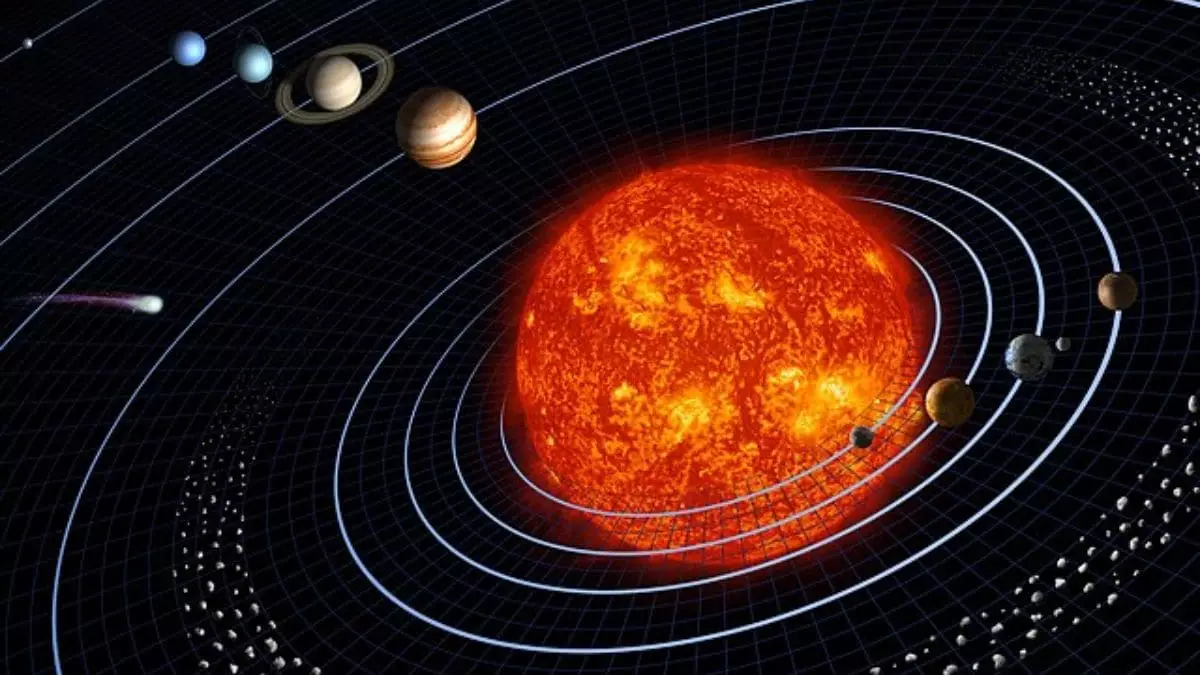The discovery of the meteorite Northwest Africa 12264 has ignited a profound reevaluation within planetary science, challenging long-held beliefs about the orderly development of our solar system. Previously, the scientific consensus held that inner rocky planets such as Earth and Mars formed rapidly and earlier, with their distant counterparts like Jupiter’s moons and other outer planets lagging behind due to their colder, water-rich environments. This new evidence confronts that narrative head-on, suggesting a far more synchronized birth of rocky worlds than we ever imagined. Such revelation compels us to reconsider the very fabric of planetary formation, forcing us to grapple with a universe that might be far more uniform and predictable than the chaotic, staggered process previously envisioned.
The Meteorite that Turns Time on Its Head
At only 50 grams, Northwest Africa 12264 is minuscule yet monumental in the scope of cosmological research. Its isotopic signatures—specifically chromium, oxygen, and lead isotopes—are internal cosmic fingerprints that reveal its extraterrestrial origin and true age. The compelling aspect of this meteorite is its age: approximately 4.564 billion years, nearly identical to the earliest known samples from Earth and Mars. This startling timeline indicates that rocky planetary formation could have occurred nearly simultaneously across regions that now seem vastly different. The implications are seismic, suggesting that the process of planetary differentiation was not slowed by water or ice as previously thought. Instead, the seasoned formation process appears to have been more universal, occurring swiftly and efficiently throughout the solar nebula.
Implications for the Broader Universe and Humanity’s Search for Life
Allowing this new scientific narrative to take root, it becomes apparent that our solar system might not be a special case but an example of a broader, galactic phenomenon. Observations of exoplanetary systems and dust disks around other stars corroborate this timeline, indicating that planetesimals—and ultimately planets—may form rapidly in diverse environments across the galaxy. If Earth and its neighbors emerged on this timeline, it significantly alters our search for life elsewhere; it suggests that Earth-like planets could be more common and form sooner than previously expected. This shifts the focus from viewing our planet as an anomaly to considering it as part of a larger, more predictable pattern inherent in the universe’s design.
The Stakes of Rewriting Scientific History
This paradigm shift — controversial yet underpinned by compelling evidence — underscores an unsettling truth: our understanding of cosmic history is vulnerable to revision. Such findings expose the danger of dogmatic scientific models rooted in outdated assumptions. As we rethink the timeline of planetary formation, we are compelled to scrutinize not just our origins, but the foundational narratives that have shaped modern astronomy. In essence, this meteorite’s revelation is a catalyst for a more nuanced, perhaps humbler, scientific perspective—one that acknowledges the universe’s capacity for rapid and homogeneous planetary creation, thereby broadening horizons for future exploration and understanding.

